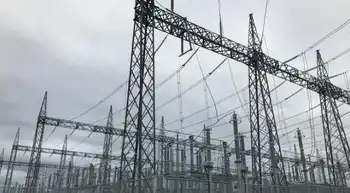Ontario electricity costs soar 50 per cent since shakeup
TORONTO, ONTARIO - Costs associated with operating Ontario's electricity agencies have soared more than 50 per cent since the old Ontario Hydro was dismantled in 1998, a Globe and Mail analysis has found.
The four major agencies that succeeded Ontario Hydro racked up $3.4-billion in operation, maintenance and administration costs in 2005, $1.2-billion higher than in 1998, the analysis shows. But revenue growth during that same period lagged at only 15 per cent, raising new questions about the government's stewardship of the sector.
Energy Minister Dwight Duncan conceded that government officials need to examine whether costs associated with overseeing the province's hydro systems can be reined in. But he said he does not have the luxury of "navel gazing" about these issues just now because he has more immediate challenges to deal with, including finding new sources of power to meet a looming electricity shortage.
"It's the kind of question that needs to be asked and the sort of issue all of us need to turn our attention to at the appropriate time," Mr. Duncan said in an interview yesterday. "But right now, we've got to keep the lights on."
The ballooning costs are a legacy of successive governments' failure to come up with a comprehensive electricity policy, leaving the province - and ultimately hydro consumers - saddled with a hugely inefficient system.
This is not the way things were supposed to turn out when the former Progressive Conservative government set out to spin off to the public a large share of Hydro One, which runs the province's massive electricity-transmission grid. But the Tories abandoned that plan in 2003, throwing Ontario's electricity policy into further turmoil.
The upshot is that too many electricity companies duplicate each other's work and spend more of the public's money with far less return, opposition members say. The top executives at four of these companies took home $3.8-million in compensation last year, ranking them the province's highest-paid public-sector employees.
"Now instead of one group of officers who were reasonably paid, you have literally five echelons of executive officers getting massive pay hikes and bonuses," NDP Leader Howard Hampton said. "When you add up all the new charges, ordinary folks see a hydro bill that's doubled."
Today, five companies oversee the province's electricity system. Hydro One is responsible for transmission; Ontario Power Generation manages the nuclear, hydroelectric and coal plants; the Independent Electricity System Operator runs the spot market; the Ontario Power Authority does planning; and the Ontario Electricity Financial Corp. manages the billions of dollars in debts left behind from building nuclear reactors.
"I call it the alphabet soup of different agencies and bodies they've now created," Progressive Conservative Leader John Tory said. "The bottom line is, if you did a reorganization like this anywhere else in the world and spent a whole bunch more and got a whole bunch less, you'd be looking for work."
The numbers in the Globe study reveal that the freewheeling spending on credit cards at Hydro One and OPG, documented by the Auditor-General Jim McCarter, might be symptomatic of a deeper problem. Hydro One chief executive officer Tom Parkinson abruptly resigned after the Auditor-General's office revealed that he had allegedly violated company policy by charging $45,000 in expenses to his secretary's corporate credit card. He collected $3-million in severance on his way out the door.
The auditor also noted that throughout 2005, more than $127-million was charged to Hydro One corporate credit cards but expense reports and receipts were often insufficient to determine their legitimacy. At OPG, the auditor found that employees did not submit receipts last year for $6.5-million in credit-card purchases.
Hydro One spokesman Peter Gregg said the utility has made a concerted effort in recent years to reduce costs.
The utility's costs totalled $795-million in 2005, down from $856-million in 2000. Over that same period, revenue climbed to $4-billion from $3-billion.
The company has consolidated 13 control centres into one and cut the number of employees to 4,189 from 4,815 since 2000. A company source said Mr. Parkinson was fond of saying "there are too many people standing around looking, and not enough doing."
By comparison, costs have gone up at OPG, the province's largest electricity entity, to $2.5-billion last year from $2.2-billion in 1998. Revenue has slipped during that same period to $5.8-billion from $6.6-billion.
A company spokesman said OPG has little control over its revenue because the government caps how much it can charge customers for electricity. As well, the spokesman said some of the increased costs reflect accounting changes.
For the sector overall, revenue increased to $10.4-billion from $9-billion, the study shows.
The top executives at Ontario's four largest electricity entities pocketed the most lucrative pay packets among public-service employees in 2005. Three have since departed, including Hydro One chief executive officer Tom Parkinson, who pocketed $3-million in severance pay on his way out the door recently.
The head of the fifth hydro entity, Ontario Electricity Financial Corp., did not rank among the public-service employees who earned more than $100,000 last year. In 1999, one official had responsibility for the work done by five today. The president of Ontario Hydro at the time, Ron Osborne, was paid $1.15-million in salary.
Related News

Chinese govt rejects the allegations against CPEC Power Producers
BEIJING - Chinese government has rejected the allegations against the CPEC Power Producers (CPPs).
Chinese government has made it clear that a mammoth cooperation with Pakistan in the energy sector is continuing.
A letter written by Chinese ambassador to minister of Energy Omar Ayub Khan has said that major headway has been seen in recent days in the perspective of CPEC projects. But he wants to invite the attention of government of Pakistan to the recent allegations leveled against the CPEC Power Producers (CPPs).
The Chinese ambassador further said Energy is a major area of cooperation under the CPEC and the CPPs have…




